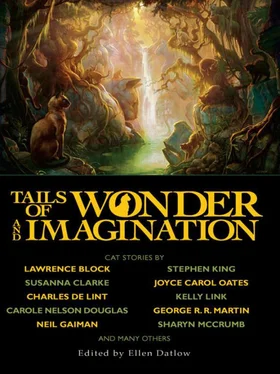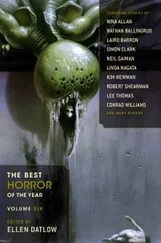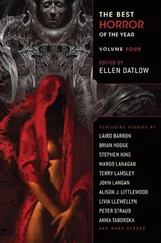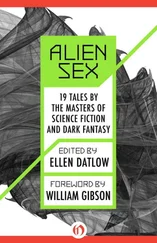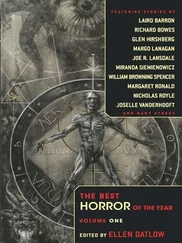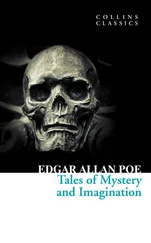Ellen Datlow - Tails of Wonder and Imagination
Здесь есть возможность читать онлайн «Ellen Datlow - Tails of Wonder and Imagination» весь текст электронной книги совершенно бесплатно (целиком полную версию без сокращений). В некоторых случаях можно слушать аудио, скачать через торрент в формате fb2 и присутствует краткое содержание. Год выпуска: 2010, ISBN: 2010, Издательство: Night Shade Books, Жанр: Фэнтези, Фантастика и фэнтези, Ужасы и Мистика, на английском языке. Описание произведения, (предисловие) а так же отзывы посетителей доступны на портале библиотеки ЛибКат.
- Название:Tails of Wonder and Imagination
- Автор:
- Издательство:Night Shade Books
- Жанр:
- Год:2010
- ISBN:978-1-59780-170-6
- Рейтинг книги:5 / 5. Голосов: 1
-
Избранное:Добавить в избранное
- Отзывы:
-
Ваша оценка:
- 100
- 1
- 2
- 3
- 4
- 5
Tails of Wonder and Imagination: краткое содержание, описание и аннотация
Предлагаем к чтению аннотацию, описание, краткое содержание или предисловие (зависит от того, что написал сам автор книги «Tails of Wonder and Imagination»). Если вы не нашли необходимую информацию о книге — напишите в комментариях, мы постараемся отыскать её.
collects the best of the last thirty years of science fiction and fantasy stories about cats from an all-star list of contributors.
Tails of Wonder and Imagination — читать онлайн бесплатно полную книгу (весь текст) целиком
Ниже представлен текст книги, разбитый по страницам. Система сохранения места последней прочитанной страницы, позволяет с удобством читать онлайн бесплатно книгу «Tails of Wonder and Imagination», без необходимости каждый раз заново искать на чём Вы остановились. Поставьте закладку, и сможете в любой момент перейти на страницу, на которой закончили чтение.
Интервал:
Закладка:
The irony was, I seriously doubt Gurney would’ve truly enjoyed all the fuss made about his work; what he’d created was too private for all that. Not when he’d so lovingly stroked the images of his “little girls” faces in that rental car of mine, and not when he’d so spontaneously shared that cat-size dream of his from his barn-mucking boyhood so many years—and barn cats—ago. But at least for me, there was one benefit from his life, and his work, becoming so public: It gave me an opportunity to find out what really happened to him, without my needing to visit that depressing small town where I’d met him or to actually see his all-but-empty cell-like adult day-care bedroom.
Some policemen found his body, almost covered by long, dead grass, just below the barn where he’d painted the “little girls”; he was curled on his left side, almost in a fetal position, with both hands covering his face, not unlike a cat at sleep or rest. Supposedly it was a heart attack, but that didn’t account for the abrasions on his exposed face and hands; a rough, red, rash-like disruption on his flesh, which was eventually dismissed as fire-ant bites. Nor did the “official” cause of death account for the blissful look on his face that the policeman in one A&E special described; you don’t have to be a doctor to know that heart attacks are painful.
Nor do you need to be an expert on cats—especially big cats—to know what a cat’s tongue can do to unprotected flesh, especially when they get it into their heads to keep licking and licking while snuggled together in a pile of warm, furry flesh.
Maybe Hobart Gurney didn’t mean to say good-bye per se during that self-prescribed tour of his creations; maybe he’d just grown nostalgic after seeing the pictures I’d given to him. Funny how he took the album with him, when he’d never forgotten a single cat he’d created, but then again, no one will ever know what drove him to turn a Depression-era job taken despite an aversion to heights into something more than his life’s work. Perhaps my decision to collect photographs of his work ultimately led to his death, which I heard about on the CNN news. But if that is so, I can’t quite feel guilty about it—after all, Gurney hadn’t painted cats in years; true, nothing stopped him from painting them on canvas, but I don’t think that was Gurney’s way at all.
Hadn’t he said that what he was doing was work, something he was supposed to be doing? I doubt that the notion of painting for himself applied to his practical mind, just as I doubt that he could have foreseen a day when his cats would be severed from the very barns on which they lived, to be taken in wall-size chunks and “domesticated” in museums and art galleries all over the country.
Or… maybe he did have an inkling of what would happen, and knew that he wouldn’t have his cats to himself for very much longer…
And, considering what was written on his tombstone—by whom, I don’t know—I don’t think I’m the only person who maybe knows what really happened to Hobart Gurney, down in the long, dead, flattened grass below the “little girls”… for this is what is carved on his barn-gray tombstone:
No Heaven will not ever Heaven be,
Unless my Cats are there to Welcome me.
All I can say is, I hope it was warm, and soft, and loving , there in the long, dead grass, with the little girls…
In memory of:
Beanie, Ming, Fella, Ollie, Stan, Puddin’, Blackie, Cupcake, Smokie, Prissy, Mish-Mish, Dewie, Rusty, Precious, Puff, Lucky, Eric, Sweetheart, Jack, Early Grey, Charlie, Dolly, Maynard, Willie, Gwen, Laya, Spunky, Belle, Stripes, Boo, Moo-Moo, Bruiser, Monkey, Goldie, Poco, Butterball, Spooky, Silky, Ladybug, Orangey, Ko-Ko, Frosty, Simba, Rosie, Mrs. T., Mister, Muffin (Bubba), Speedy, Whiskers, Bitsy, Purr-Bear, Kay-Tu, Chloe, Bippy, Brutis, Teddy, Amelia, Elmo, Alphie, Gloria, Woody, Jezebel, Tigger, Pansy, Oscar, April, Peokoe, Meg, Adrian, Sylvester, Baby, Marco Polo, Lovey, Candy, Lola, Lacy, Poopie (Violet), Queenie, Otto, Babykins, Momma Cat, Cutie Pie, Sandy, Beauty, Sean, Chewie, Scooter, Mittens, Taffy, Boo Boo, Clyde, Bailey, Gummitch, Dundee, Chatty, Princess, Pinky, Apollo, Amber, Denise, Callie, Bijou, Squeeky, Cee-Cee, Felix, Boogie, Little Boy, Sugarplum, Tweetie Pie, Ruby, Penny, Fluffy (II), Pumpkin, Casper, Boots, Jet, Honey, Beau, Angel, Mack, Bugsy, Miss Kitty, Katie, June Bug, Cinnamon, Tippi, Gracie, Quinn, Grady, Trudy, Baby Biscuit, May, and Mongo.
THE PRICE
Neil Gaiman
Neil Gaiman is the Newbery-winning author of The Graveyard Book and a New York Times bestseller , whose books have been made into major motion pictures including the recent Coraline. He is also famous for the “Sandman” graphic novel series, and for numerous other books and comics for adult, young adult, and younger readers. He has won the Hugo, Nebula, Mythopoeic, World Fantasy, and other awards. He is also the author of powerful short stories and poems.
“The Price” is a lovely mystical, powerful, and moving tale that Gaiman admits is also more or less true. At least, the narrator in this story “is pretty much me, the house is my house, the cats my cats, and the family is my family. The black cat was just as I have described him.”
Tramps and vagabonds have marks they make on gateposts and trees and doors, letting others of their kind know a little about the people who live at the houses and farms they pass on their travels. I think cats must leave similar signs; how else to explain the cats who turn up at our door through the year, hungry and flea-ridden and abandoned?
We take them in. We get rid of the fleas and the ticks, feed them and take them to the vet. We pay for them to get their shots, and, indignity upon indignity, we have them neutered or spayed.
And they stay with us, for a few months, or for a year, or for ever.
Most of them arrive in summer. We live in the country, just the right distance out of town for the city-dwellers to abandon their cats near us.
We never seem to have more than eight cats, rarely have less than three. The cat population of my house is currently as follows: Hermione and Pod, tabby and black respectively, the mad sisters who live in my attic office, and do not mingle; Princess, the blue-eyed long-haired white cat, who lived wild in the woods for years before she gave up her wild ways for soft sofas and beds; and, last but largest, Furball, Princess’s cushion-like calico long-haired daughter, orange and black and white, whom I discovered as a tiny kitten in our garage one day, strangled and almost dead, her head poked through an old badminton net, and who surprised us all by not dying but instead growing up to be the best-natured cat I have ever encountered.
And then there is the black cat. Who has no other name than the Black Cat, and who turned up almost a month ago. We did not realize he was going to be living here at first: he looked too well-fed to be a stray, too old and jaunty to have been abandoned. He looked like a small panther, and he moved like a patch of night.
One day, in the summer, he was lurking about our ramshackle porch: eight or nine years old, at a guess, male, greenish-yellow of eye, very friendly, quite unperturbable. I assumed he belonged to a neighboring farmer or household.
I went away for a few weeks, to finish writing a book, and when I came home he was still on our porch, living in an old cat-bed one of the children had found for him. He was, however, almost unrecognizable. Patches of fur had gone, and there were deep scratches on his grey skin. The tip of one ear was chewed away. There was a gash beneath one eye, a slice gone from one lip. He looked tired and thin.
Читать дальшеИнтервал:
Закладка:
Похожие книги на «Tails of Wonder and Imagination»
Представляем Вашему вниманию похожие книги на «Tails of Wonder and Imagination» списком для выбора. Мы отобрали схожую по названию и смыслу литературу в надежде предоставить читателям больше вариантов отыскать новые, интересные, ещё непрочитанные произведения.
Обсуждение, отзывы о книге «Tails of Wonder and Imagination» и просто собственные мнения читателей. Оставьте ваши комментарии, напишите, что Вы думаете о произведении, его смысле или главных героях. Укажите что конкретно понравилось, а что нет, и почему Вы так считаете.
